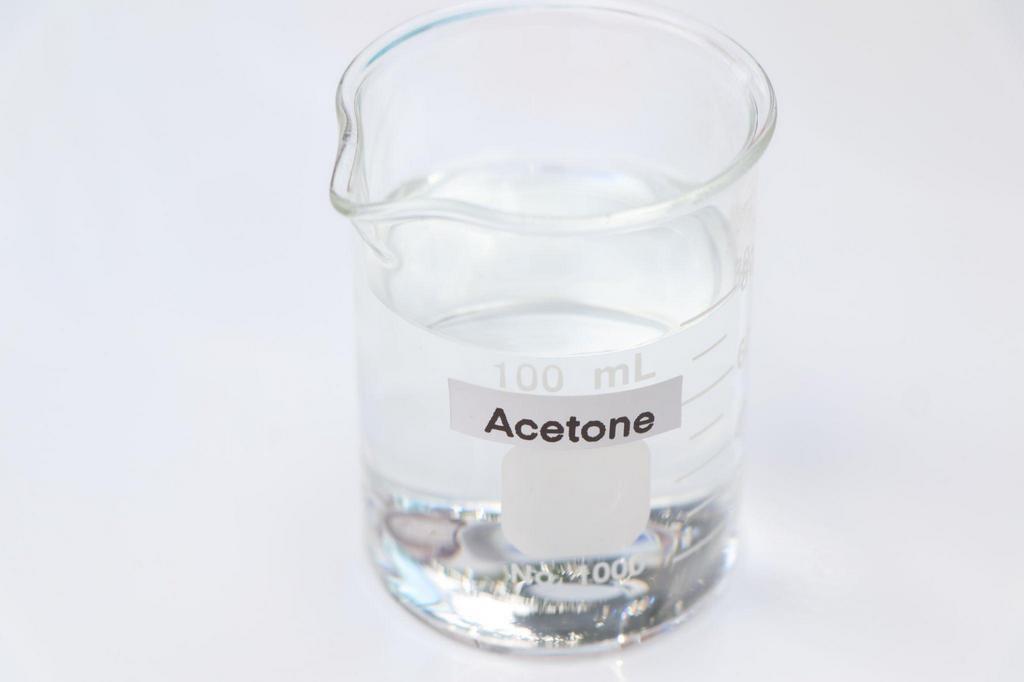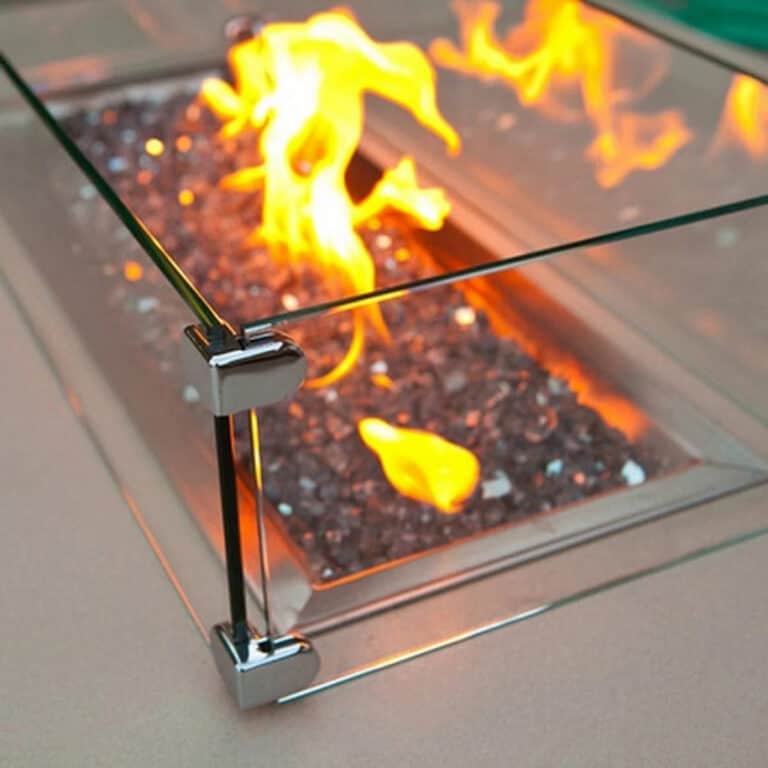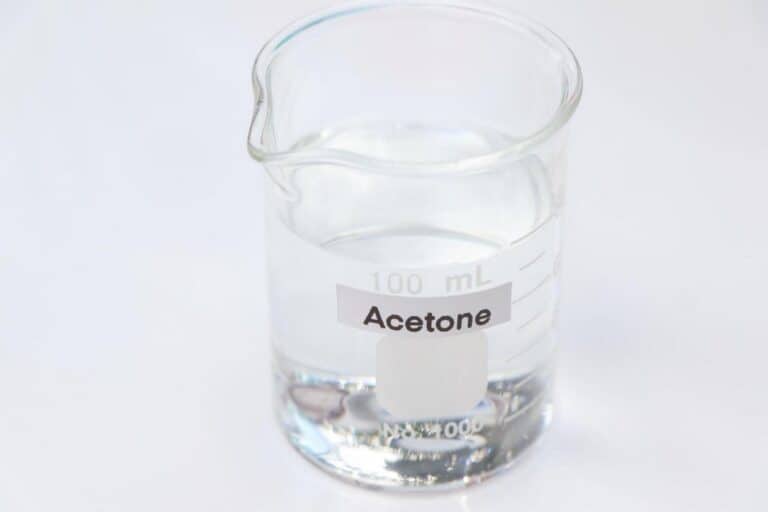Will Acetone Remove Paint From Glass Safely and Effectively? Find Out Here!

When it comes to removing paint from glass, many people believe that it’s a challenging task. It’s understandable that you may have tried several methods, but none seems to work. Fortunately, there’s a solution to this problem: acetone.
Acetone is a powerful solvent that dissolves paint and other substances. But, the big question is, will acetone remove paint from glass safely and effectively? In this article, we’ll explore this question and provide you with all the information you need to know.
Understanding Acetone and its Properties
Acetone is a colorless and flammable liquid that is commonly used as a solvent in various cleaning and industrial applications. It has a low boiling point and evaporates quickly, making it a popular choice for removing paint and other coatings from surfaces.
While acetone is effective in removing paint from surfaces, it can also be dangerous if not handled properly. It can be harmful if inhaled, ingested, or absorbed through the skin. Additionally, it can be flammable and should be stored and used in a well-ventilated area away from any sources of heat or flame.
Will Acetone Remove Paint From Glass Safely and Effectively
While acetone can be an effective way to remove paint from glass surfaces, it’s important to consider the safety risks involved. Acetone is generally safe to use on glass surfaces, as it will not damage the material or leave any residue behind. However, it’s important to note that not all types of paint will be removed with acetone.
Acetone is most effective on latex paint, which is commonly used for interior painting. If you have oil-based or enamel paint on your glass surface, acetone may not be as effective, and you may need to try other methods for removal.
It’s important to note that acetone may not be effective in removing all types of paint from glass surfaces. In some cases, alternative methods may need to be considered, such as using a razor blade or a specialized paint remover designed for glass surfaces
How to Use Acetone to Remove Paint from Glass
Now that you know what acetone is and how to use it safely, let’s explore how to use acetone to remove paint from glass.
Step 1: Gather the Materials
To use acetone to remove paint from glass, you’ll need the following materials:
- Acetone
- Gloves
- Eye protection
- Mask
- Cotton balls or swabs
- Razor blade or scraper
Step 2: Prepare the Area
Before you start, you must prepare the area. Cover the surrounding area with a drop cloth or newspaper to protect it from spills. Also, open windows or turn on a fan to ventilate the area.
Step 3: Apply Acetone to the Paint
Put on gloves, eye protection, and a mask. Dip a cotton ball or swab into acetone and apply it to the paint. Let the acetone sit on the paint for a few minutes.
Step 4: Rub the Affected Area
Gently rub the affected area with the acetone-soaked cloth or cotton ball. Make sure to apply light pressure and work in circular motions.
Step 5: Repeat if Necessary
If there’s still paint on the glass, repeat steps 3 and 4 until all the paint is gone.
Step 6: Clean the Glass
After you’ve removed all the paint, clean the glass with soap and water to remove any remaining acetone residue.
Other Alternatives for Removing Paint from Glass
If acetone is not effective in removing paint from your glass surface, there are other options you can try:
- Vinegar: Mix equal parts of vinegar and warm water, and apply the solution to the affected area. Let it sit for a few minutes, then use a clean cloth to rub the area until the paint is removed.
- Rubbing alcohol: Apply rubbing alcohol to a clean cloth or cotton ball and rub the affected area until the paint is removed.
- Razor blade: Use a razor blade to gently scrape the paint off the glass surface. This method requires some skill and patience to avoid damaging the glass surface.
It’s important to note that when using any of these alternatives, you should still take the necessary precautions to protect yourself from harm.
Can Turpentine Remove Paint?
Turpentine, a solvent derived from tree resin, has been a popular choice for artists for centuries. It has been used to thin paint and clean brushes, but can it remove paint from surfaces? The answer is yes, turpentine can remove paint, but it’s important to note that it’s only effective on certain types of paint.
Turpentine is particularly effective in removing oil-based paint. Oil-based paint is a type of paint that uses oil as a binder. This type of paint is known for its durability and resistance to wear and tear. However, oil-based paint can be challenging to remove from surfaces once it has dried. This is where turpentine comes in handy. It’s a powerful solvent that can dissolve the oil-based paint and make it easier to remove.
In addition to oil-based paint, turpentine can also be used to remove acrylic paint, varnishes, tar, and tree sap. Acrylic paint is a water-based paint that dries quickly and is often used by artists. However, it can be challenging to remove from surfaces once it has dried. Turpentine can be used to dissolve the acrylic paint and make it easier to remove.
Top 5 Commercial Paint Strippers
If you’re in need of a powerful paint remover that can tackle even the toughest paint jobs, it’s important to know your options. With so many paint strippers on the market, it can be difficult to know which one is the strongest and most effective for your needs. Here are the top 5 paint strippers that are known for their strength and effectiveness:
1. Longest Lasting: Citristrip Paint & Varnish Stripping Gel
Citristrip Paint & Varnish Stripping Gel is a popular paint stripper that is known for its long-lasting stripping power. This stripper is formulated to remove multiple layers of paint, varnish, and other coatings from wood, metal, and masonry surfaces. It contains no methylene chloride or harsh chemicals, making it a safer alternative to traditional paint strippers. Citristrip Paint & Varnish Stripping Gel is also biodegradable, making it an environmentally friendly option.
2. Best For Indoors: Dumond Smart Strip Advanced Paint Remover
Dumond Smart Strip Advanced Paint Remover is a water-based paint stripper that is ideal for use indoors. This powerful stripper is formulated to remove multiple layers of paint, varnish, and other coatings from wood, metal, concrete, and masonry surfaces. It is safe to use on most surfaces and does not emit harsh fumes or odors. Dumond Smart Strip Advanced Paint Remover is also non-flammable and non-toxic, making it a safer alternative to traditional paint strippers.
3. Best For Latex Paint: Motsenbocker’s Lift Off Latex Paint Remover
Motsenbocker’s Lift Off Latex Paint Remover is a water-based paint stripper that is specifically designed to remove latex paint from a variety of surfaces. This powerful stripper is safe to use on most surfaces, including wood, metal, concrete, and masonry. It is formulated to remove multiple layers of latex paint quickly and effectively, without the use of harsh chemicals. Motsenbocker’s Lift Off Latex Paint Remover is also environmentally friendly and biodegradable, making it a safer and more sustainable option.
4. Fastest Acting: D SUPER REMOVER Paint Stripper
D SUPER REMOVER Paint Stripper is a powerful paint stripper that is known for its fast-acting stripping power. This stripper is formulated to remove multiple layers of paint, varnish, and other coatings from a variety of surfaces, including wood, metal, and masonry. It is a safe and effective alternative to traditional paint strippers, containing no methylene chloride or other harsh chemicals. D SUPER REMOVER Paint Stripper is also non-flammable and non-toxic, making it a safer option for use in the home or workplace.
5. Best Comprehensive Stripper: MAX Strip Paint & Varnish Stripper
MAX Strip Paint & Varnish Stripper is a comprehensive paint stripper that is formulated to remove multiple layers of paint, varnish, and other coatings from a variety of surfaces. This powerful stripper is safe to use on most surfaces, including wood, metal, concrete, and masonry. It contains no methylene chloride or other harsh chemicals, making it a safer alternative to traditional paint strippers. MAX Strip Paint & Varnish Stripper is also biodegradable, making it an environmentally friendly option.





